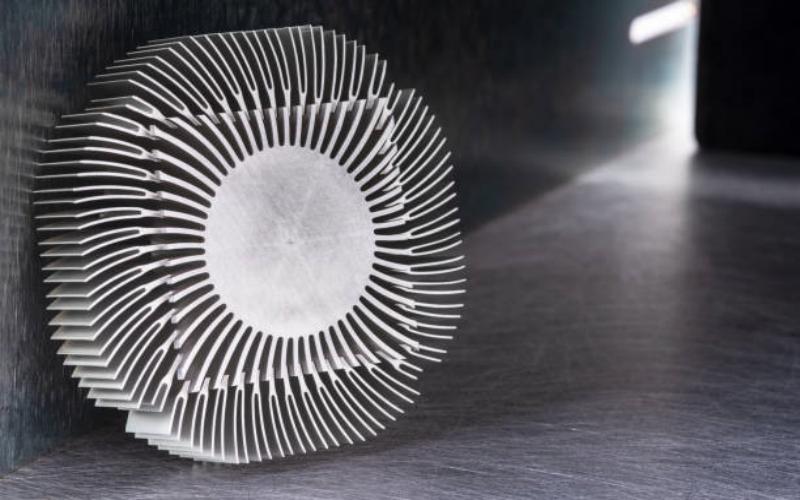The Importance of Heatsinks in Electronics
Heatsinks are crucial components in electronic devices, as they help dissipate heat and prevent overheating, which can lead to performance issues or even permanent damage. Whether you're a hobbyist or an electronics manufacturer, understanding the process of manufacturing heatsinks can be invaluable. In this article, we will explore the various aspects of manufacturing a heatsink, from design considerations to the fabrication process.
Design Considerations for Heatsinks
Before diving into the manufacturing process, it's essential to consider the design aspects of heatsinks. The effectiveness of a heatsink depends on factors such as its material, surface area, and fin density. The material choice should have high thermal conductivity, such as aluminum or copper, to efficiently transfer heat from the source. Additionally, increasing the surface area and fin density can enhance the heatsink's heat dissipation capabilities.
Choosing the Right Manufacturing Method
There are several manufacturing methods available for producing heatsinks, each with its own advantages and limitations. The most common methods include extrusion, casting, and forging. Extrusion is a widely used method that involves pushing heated metal through a die to create the desired shape. Casting, on the other hand, involves pouring molten metal into a mold and allowing it to solidify. Lastly, forging utilizes compressive forces to shape the metal. Selecting the appropriate method depends on factors such as complexity, cost, and desired performance.
The Extrusion Process
Extrusion is the preferred method for manufacturing heatsinks due to its cost-effectiveness and versatility. The process involves heating a metal billet, typically aluminum, and forcing it through a die using a hydraulic press. The die imparts the desired shape, including the base, fins, and any other features required. After extrusion, the heatsink is cut to the desired length and undergoes further processing steps, such as surface treatment and finishing.
Casting Heatsinks for Complex Designs
In cases where complex heatsink designs are required, casting can be a suitable manufacturing method. The casting process involves pouring molten metal, usually aluminum or copper, into a mold and allowing it to solidify. This method allows for intricate designs and the inclusion of additional features, such as heat pipes or mounting brackets. However, casting heatsinks may have slightly lower thermal conductivity compared to extruded heatsinks.
The Forging Technique for Enhanced Durability
Forging is a manufacturing method that involves shaping metal by applying compressive forces. While not as commonly used as extrusion or casting for heatsink production, forging offers unique advantages. Forged heatsinks have excellent mechanical strength and durability, making them ideal for applications where ruggedness is required. However, the forging process is typically more expensive and time-consuming than other methods.
Surface Treatment and Finishing Options
Surface treatment and finishing play a crucial role in enhancing the performance and appearance of heatsinks. The most common surface treatment is anodizing, which creates a protective oxide layer on the heatsink's surface, improving corrosion resistance. Finishing options include painting, powder coating, or polishing to achieve the desired aesthetic appeal. It's important to note that surface treatment and finishing may impact the thermal performance of the heatsink, so careful consideration is necessary.
Quality Control and Testing
Ensuring the quality and performance of heatsinks is essential, and manufacturers employ various testing methods to achieve this. Thermal testing involves measuring the heatsink's ability to dissipate heat using specialized equipment. Other tests may include mechanical strength testing, dimensional inspections, and surface quality assessments. Quality control processes are put in place to identify any defects or deviations from specifications, ensuring that only high-quality heatsinks reach the market.
Integration and Assembly
Once the heatsinks are manufactured, they need to be integrated into electronic devices. This involves carefully aligning the heatsink with the heat source, such as a microprocessor, and securing it using appropriate thermal interface materials, such as thermal paste or pads. The assembly process requires precision and attention to detail to ensure optimal thermal contact and efficient heat transfer.
Ongoing Advancements in Heatsink Manufacturing
As technology continues to advance, so does the field of heatsink manufacturing. Researchers and manufacturers are constantly exploring new materials, such as graphene or carbon nanotubes, that offer superior thermal conductivity. Additive manufacturing, also known as 3D printing, is another area of interest, as it allows for intricate geometries and customized heatsink designs. These ongoing advancements promise even more efficient and effective heatsinks in the future.

